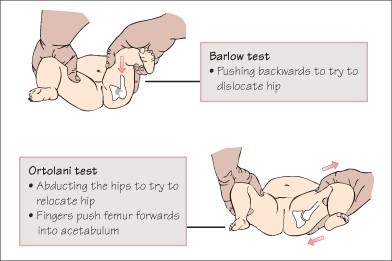An older client is admitted to the intensive care unit unconscious after several days of vomiting and diarrhea.
Vital Signs
Heart Rate-beats/minute- 110 Respirations - breathes/minute- 28 Blood Pressure – mmHG- 80/60
Arterial blood gases (ABGs)
Ph- 7.34
PaCO2- 34 mmHg
HCO3- 20 mmol/L
pO2- 90 mmHg
Electrolytes Results
Sodium
130 mEq/L(mmol/L) Potassium
2.5 mEq/L (mmol/L) Chloride
95 mEq/L (mmol/L)
Reference Range:
Sodium [136 to 145 mEq/L (136 to 145 mmol/L)]
Potassium [3.5 to 5 mEq/L (3.5 to 5 mmol/L)]
Chloride [98 to 106 mEq/L (98 to 106 mmol/L)]
PaCO2 [35 to 45 mm Hg]
HCO, [21 to 28 mEq/L (21 to 28 mmol/L)] PaO2 [80 to 100 mm Hg)
The nurse inserts a urinary catheter and obtains a scant amount of dark amber output. Which intervention should the nurse implement first? (Please scroll and view each tab's information in the client's medical record before selecting the answer.)
Initiate continuous dopamine infusion at 2 mcg/kg/minute.
Administer promethazine 25 mg slow intravenous (IV) push every 4 hours.
Begin potassium chloride 10 mEq over 1 hour per secondary infusion.
Give a bolus of 0.9% sodium chloride 1,000 ml over 30 minutes.
The Correct Answer is D
A) Incorrect - Initiating continuous dopamine infusion is not a priority in this situation. The client's low blood pressure and electrolyte imbalances require more immediate attention.
B) Incorrect - Administering promethazine addresses symptoms like nausea and vomiting, but it doesn't address the primary issue of hypovolemia and low blood pressure.
C) Incorrect - Administering potassium chloride without addressing the fluid deficit can be dangerous and may lead to further electrolyte imbalances.
D) Correct- The client's vital signs and laboratory results indicate hypovolemia (low blood pressure, low sodium, and low potassium). The immediate priority is to address the fluid deficit and correct the electrolyte imbalances. Administering a bolus of 0.9% sodium chloride (normal saline) will help increase intravascular volume and improve blood pressure, as well as correct the electrolyte imbalances to some extent.
Nursing Test Bank
Naxlex Comprehensive Predictor Exams
Related Questions
Correct Answer is D
Explanation
The correct answer is Choice D
Choice A rationale: Repeating information may reinforce understanding but does not address the core barrier in unilateral hearing loss, which is sound localization and clarity. Auditory input from one ear limits binaural processing, making it harder to distinguish speech from background noise. Repetition without visual cues or proper orientation may still result in misinterpretation. Effective communication requires compensating for the sensory deficit, not merely reiterating content. Thus, repetition alone is insufficient for optimal education delivery.
Choice B rationale: Writing on a whiteboard provides visual support but lacks the dynamic interaction necessary for patient education. While visual aids help reinforce concepts, they do not allow for immediate clarification or emotional engagement. Pain management education involves nuanced discussion of pharmacologic options, side effects, and patient preferences. Relying solely on written communication may hinder comprehension, especially if literacy or cognitive load is a concern. It should supplement, not replace, direct verbal and visual interaction.
Choice C rationale: Speaking loudly into the affected ear is counterproductive and may distort sound further. In unilateral hearing loss, the affected ear has reduced or absent auditory function, and increasing volume does not restore clarity. Loud speech can also be perceived as aggressive or uncomfortable. Effective communication requires engaging the functional ear and using visual cues to enhance comprehension. Loudness does not compensate for neural deficits in auditory processing and may worsen patient experience.
Choice D rationale: Facing the client allows for optimal use of visual cues such as lip reading, facial expressions, and gestures, which are critical in compensating for unilateral auditory deficits. This technique engages the functional ear while supporting multimodal communication. It respects the neurophysiological limitations of monaural hearing and enhances speech perception through visual-auditory integration. Direct face-to-face interaction also fosters trust and allows for immediate feedback, making it the most scientifically sound approach for patient education.
Correct Answer is A
Explanation
The Ortolani maneuver is a physical examination technique used to assess for developmental dysplasia of the hip (DDH) in newborns. During the maneuver, the nurse gently abducts the infant's hips and applies gentle pressure to detect any instability or "click" at the hip joint. A positive Ortolani maneuver, where a click or clunk is felt or heard, can indicate the presence of a hip dislocation or dysplasia.
Asymmetrical buttocks can be a sign of hip dysplasia in newborns, and a positive Ortolani maneuver is an important finding that suggests a potential hip joint problem. Reporting this assessment test result to the healthcare provider allows for further evaluation and appropriate management of the newborn's hip condition.

The Plumb line test, which assesses fetal position curvature, is not directly related to hip dysplasia and may not be significant in this context.
The Babinski test, which reveals fanning out of the toes, is used to assess the integrity of the infant's neurological system and is not specific to hip dysplasia.
The Moro test, also known as the startle response, is a reflex assessment used to evaluate the newborn's neurological and sensory function. While it is important to assess the overall neurological status of the newborn, the Moro test is not specific to hip dysplasia.
Whether you are a student looking to ace your exams or a practicing nurse seeking to enhance your expertise , our nursing education contents will empower you with the confidence and competence to make a difference in the lives of patients and become a respected leader in the healthcare field.
Visit Naxlex, invest in your future and unlock endless possibilities with our unparalleled nursing education contents today
Report Wrong Answer on the Current Question
Do you disagree with the answer? If yes, what is your expected answer? Explain.
Kindly be descriptive with the issue you are facing.
